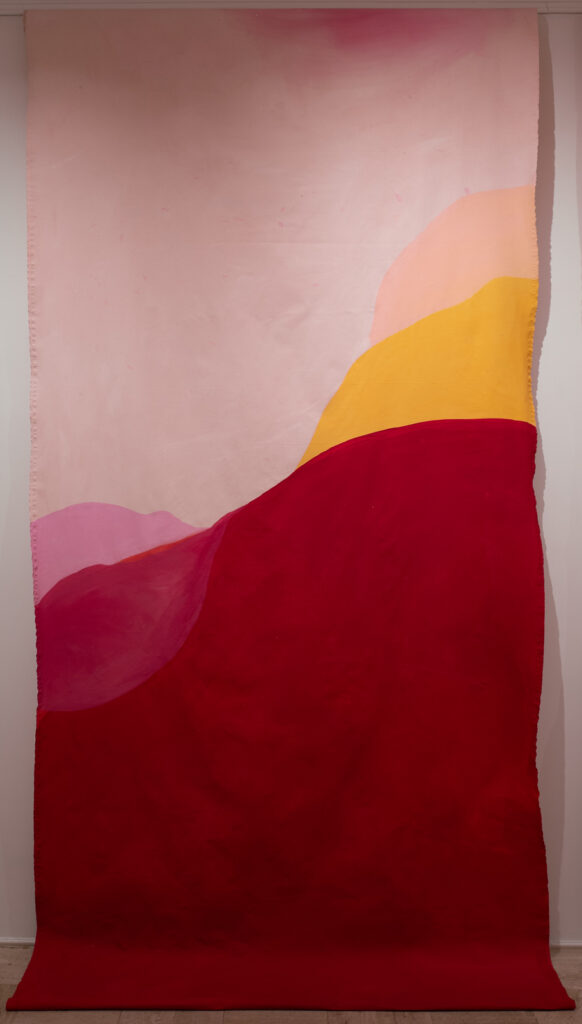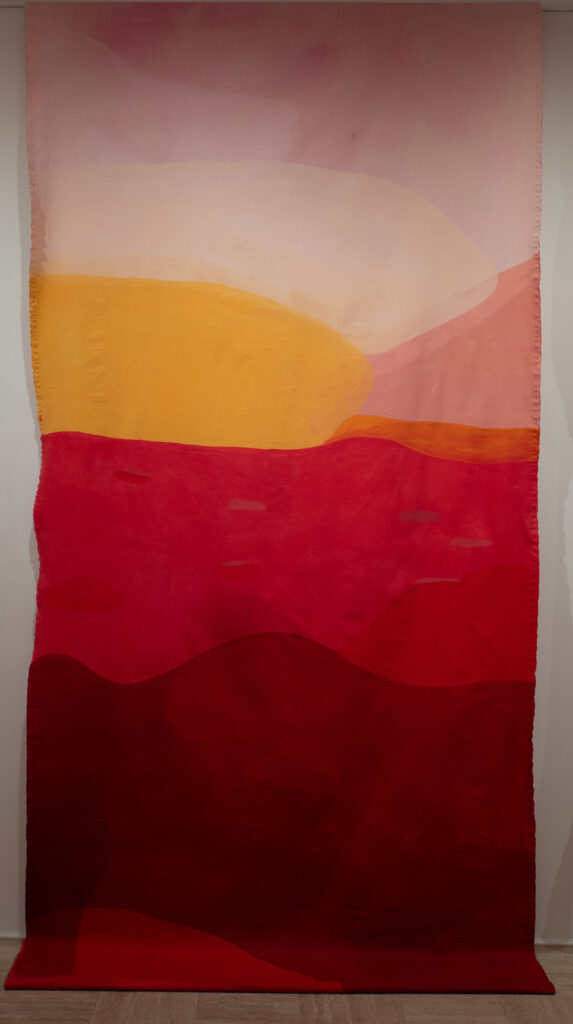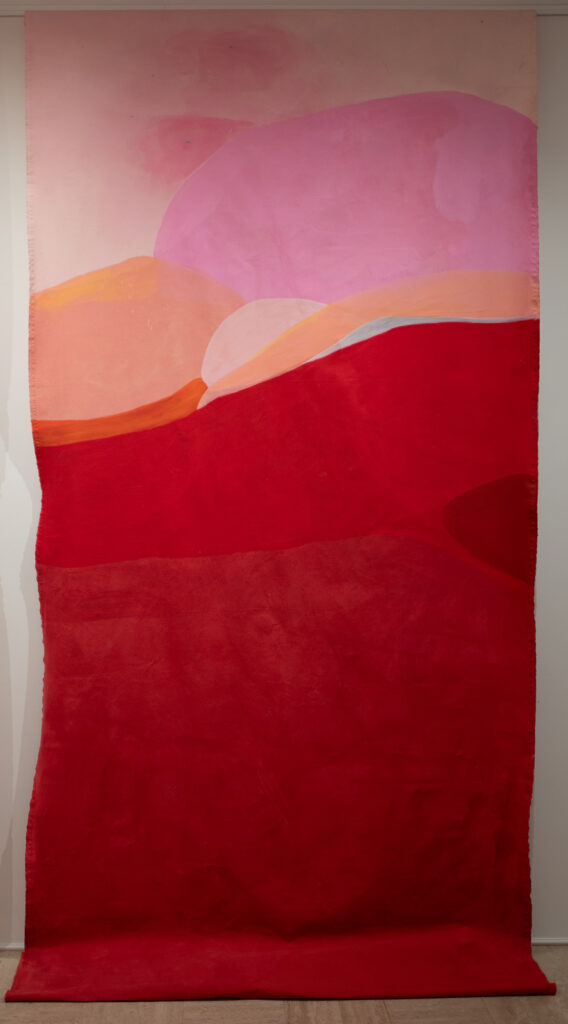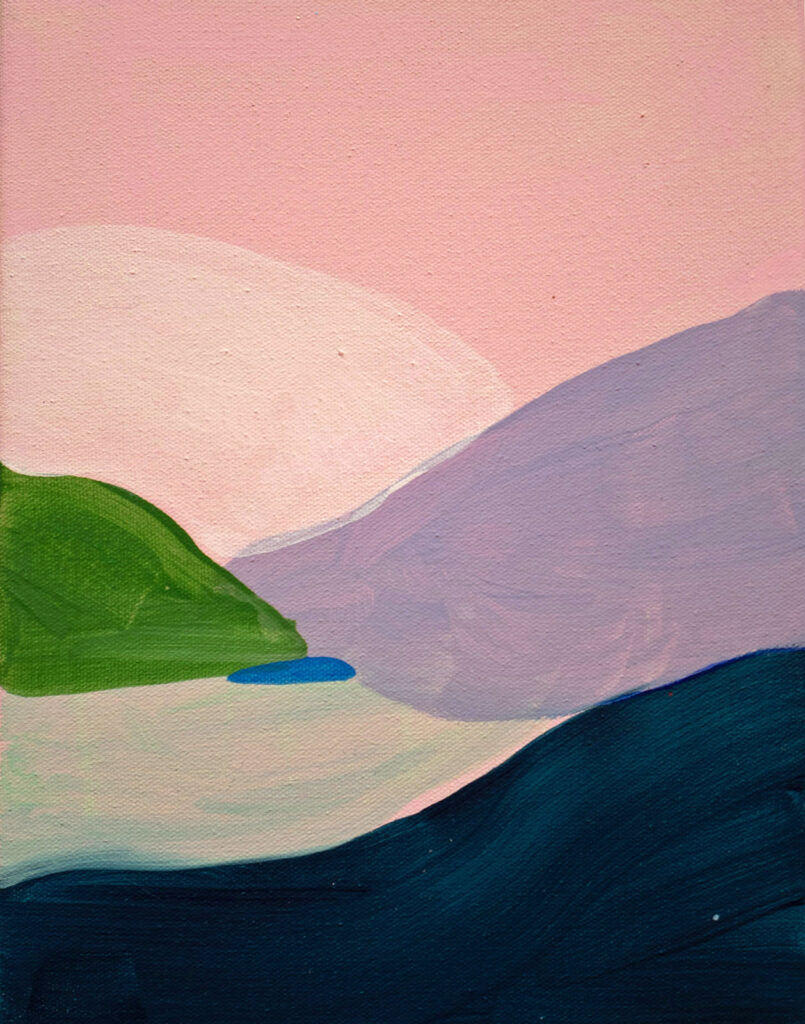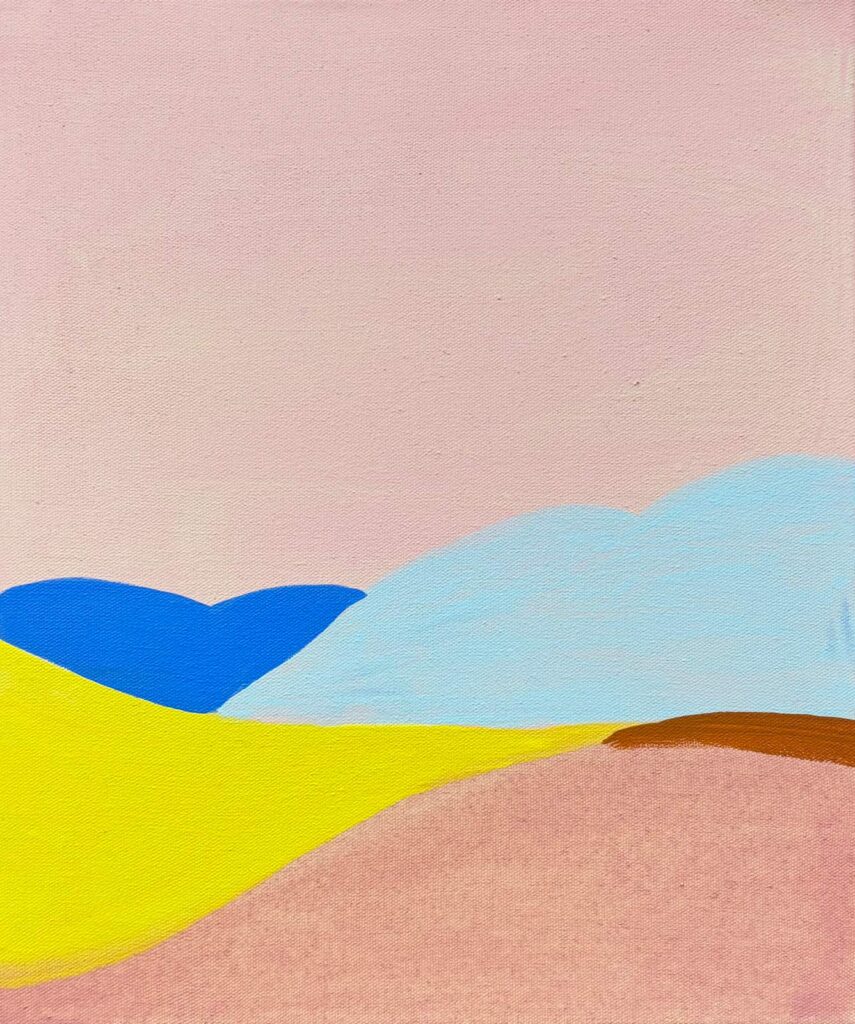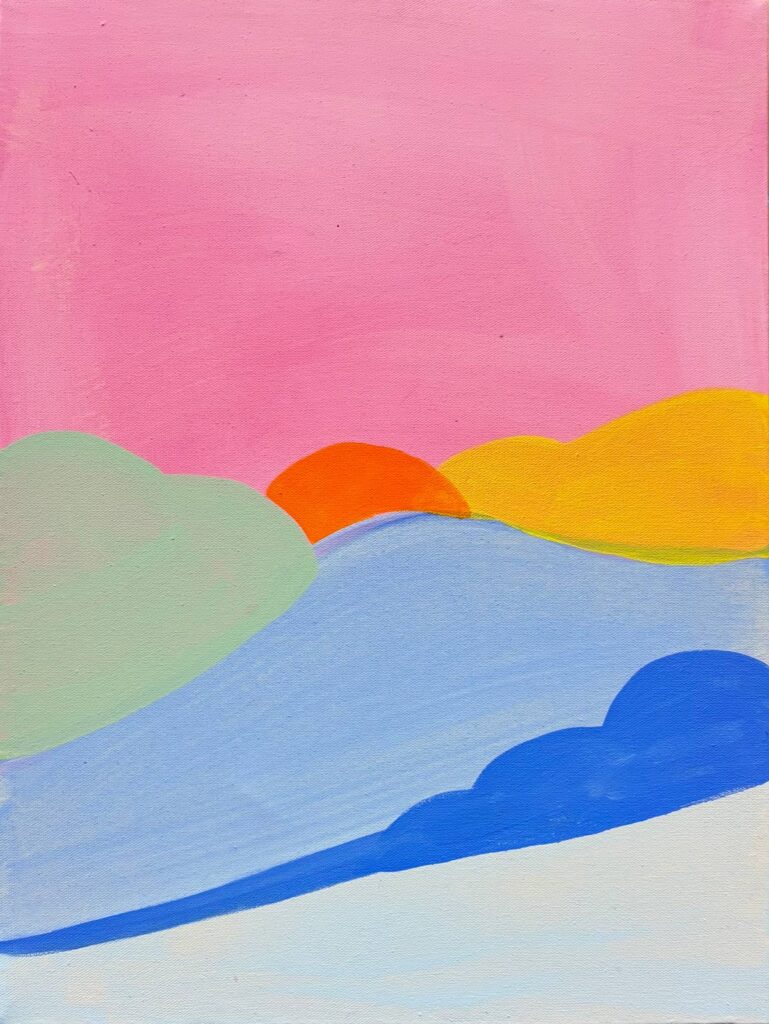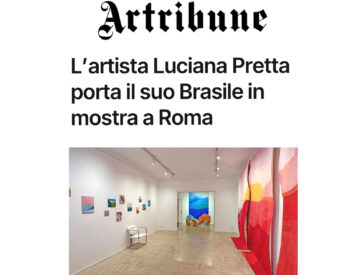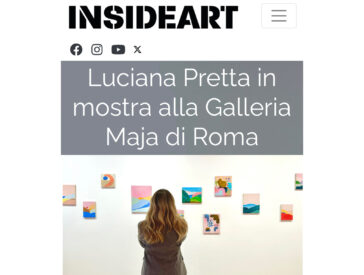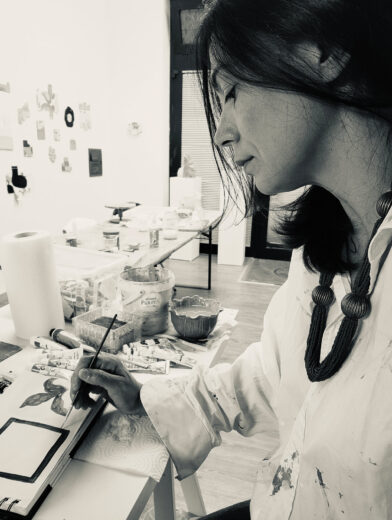
Maja Arte Contemporanea is pleased to present the solo exhibition of Brazilian artist Luciana Pretta, marking her first collaboration with the gallery. This exhibition is the second in a series of three—“When Thread, Color, and Word Intertwine”—curated by Giovanna Dalla Chiesa, which brings together the work of three artists: Alice Schivardi, Luciana Pretta, and Luisa Lanarca.
Giovanna Dalla Chiesa observes: “Luciana Pretta was born a painter. Painting is the silent language in which her sensitivity naturally developed, gently curving around obstacles, finding refuge in the richness of emotions and dreams. Her painting makes no distinction between line and color, between drawing (reason) and color (emotion).
The Brazil she comes from—though of Italian origin—with its vast expanse, vibrant colors, ignorance of the passions and conflicts that fuel Greek tragedy, its absence of any rules of perspective, is a realm of spontaneous relationships, where culture favors not representation but song, music, and dance. It is a land where rituals and behaviors emerge in harmony with the natural world (and the human being), honoring both its form and essence. Europe took more than a century to overcome the division that had long plagued its culture, dismantling a Cartesian ego always eager to build barriers at every opportunity.
In recent years, Luciana Pretta’s work has evolved from the small and medium-sized formats she typically used on canvas, along with her ingenious reuse of paper, cardboard, and small objects, to monumental works that emphasize the qualities of landscape painting—a landscape that is always central to her work. Here, nature becomes body, river, and mountain, embracing the viewer within the sinuous flow of its tectonics, inviting them to feel at ease, much like one does beneath the vault of the sky, the canopy of a tree, or the hollow of a rock.
The memory of her homeland’s rugged landscapes is now ever more present, taking shape through an active process of transformation. She incorporates organic and natural materials, such as pigments from minerals and plants, essential oils, and raw cotton. This choice is not merely aesthetic but also ethical, rooted in a commitment to ecological sustainability, environmental responsibility, and a deep reverence for all of creation, of which humankind is only a small part.”
The exhibition features a selection of recent works: three monumental vertical paintings (5 meters high) are arranged along an entire wall, unfolding like suspended tapestries. Placed side by side, they evoke the idea of a fluid triptych, where color and material flow in continuity, like a single large pictorial weave. As a counterpoint, there is a group of smaller paintings and an installation that includes some of her sculptural works.
Selected works
Gallery
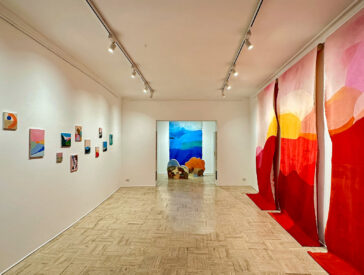
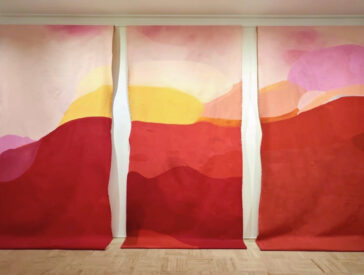
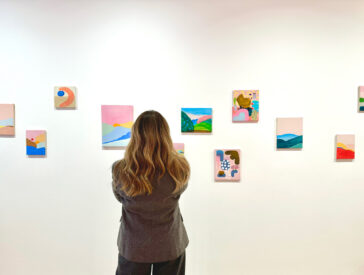
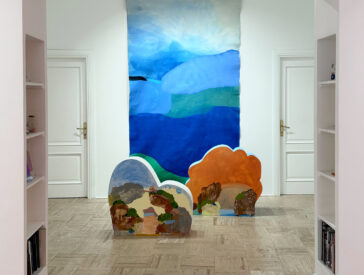
Critical essay
Luciana Pretta’s Pathways of Painting
By Giovanna Dalla Chiesa
Pretta’s World
Vitória da Conquista (Bahia), the city where Luciana Pretta was born, is situated in the heart of the Brazilian northern sertão, a desert region that, between the 19th and 20th centuries, was crossed by the cangaceiros – bandits originally employed by local landowners to suppress the natives and seize their lands for the benefit of wealthy fazendeiros. This area has long been marked by significant violence, depicted in a picturesque way by one of the greatest directors of the 20th century, Glauber Rocha, who was from the city. He viewed cinema as a poetic dream and intended to edit his memorable films – Black God, White Devil (1964), Antonio das Mortes (1969) – ‘like a song, where the camera writes, sings, and dances’.
Today, that region is even considered one of the ten most violent in the world.
How can one survive the violence and oppression of the stronger when lacking the means to fight back and the conditions to create appropriate, stable, and fair governments? Fantasy and dreams, music and dance then become the refuge for sensitive people, for those who wish to protect life rather than destroy or suffocate it.
Since childhood, Luciana, whom her family nicknamed ‘Preta’—meaning ‘black’—as she was the only one with jet-black hair, sought to create her own world in the absence of other toys and opportunities. She crafted fantastical landscapes and alternative worlds in her room, using anything that suggested a new, poetic, and imaginative possibility—paper, objects—shaping them with playful ingenuity. In the same way, as a teenager, she began painting with whatever materials she found expressive or interesting. She went on to study and graduate from the Federal University of Bahia, then moved to Italy to trace her distant Sicilian roots. She spent a considerable period studying at the Academies of Rome and Bologna, returning to Rome for her Ph.D. in Painting. Paradoxically, being far from home only strengthened her connection to her origins—history and geography run through our veins, often unbeknownst to us—and from the start, her ability to blend reasoning and emotion, drawing and color, has remained unchanged. Brazil, with its vast landscapes, dazzling colors, its unfamiliarity with the passions and conflicts at the root of Greek tragedy, and its disregard for the rules of perspective, is the realm of spontaneous relationships. It is a culture that prioritizes song, music, and dance over representation; rituals and behaviors that emerge in seamless harmony with the body of nature (and that of humans), honoring its essence and substance.
Europe, by contrast, took more than a century to free itself from the division that long plagued its culture, breaking down the Cartesian ego, ever ready to erect barriers.
Between play and memory
Painting is the silent language through which Luciana Pretta’s sensitivity naturally took shape, curving maternally around obstacles and finding refuge in the richness of emotions and dreams.
Her medium—unbound by genre—has broken boundaries, often seeping into everyday objects, fragments of overlooked or ignored realities, or even the wrappings and containers of other items, acting as signs of delicate appropriation and gentle ennobling. A striking example of this attitude is the series Remiscences – Places of Memory (2017), born by chance during a trip, a great driver of many of her inspirations. One day in Sweden, a basket full of small colored boxes caught her attention. It immediately brought back memories of her childhood games, when her creative instinct first began to take shape. Opening a small box, examining its empty skeleton, its flaps to enclose the space within itself, suggested to her the possibility of pouring her touches of paint into those compartments, which resembled chests or containers of secrets, in harmony with her flashes of memory, to preserve fragments of distant times. The reuse of cardboard also took on a symbolic dimension—resisting the exploitation of natural resources and the violence inflicted on the most vulnerable, whether humans or members of ecosystems that cannot speak—imbuing these actions with an ethical purpose that has accompanied the artist’s work ever since. The archaeology of these recovered objects evokes tools of labor, the letters of a secret alphabet in the process of being deciphered, emphasizing the polysemic nature of her activity. The nature of the sign is allusive, open to multiple interpretations depending on its reference system. In this way, through her art, she rekindles the universal childhood game of reading stains and shapes that invoke the archetypal forms of our collective and personal unconscious, unfolding infinite possibilities.
The large formats: the installation
In recent years, Luciana Pretta’s work—ranging from small and medium-sized canvases to the ingenious reuse of paper, cardboard, and small objects—has expanded into large-scale landscape painting— a central theme in her artistic practice. This shift aims to become a body, a river, a mountain, welcoming the viewer into the sinuosity of its tectonics and making them feel at ease, as one does beneath the vault of the sky, the canopy of a tree, or the hollow of a rock.
The installation Universo particolare (2019 – 2021), features a large canvas in various shades of blue, alongside painted sculptures that emerge in the foreground, forming a backdrop of mountains and hills. It draws inspiration from the breathtaking view seen from the Corcovado (710 m)—where the Christ the Redeemer statue stands—rising in the heart of Rio de Janeiro, with the vast sea below and the islands and islets visible on the horizon, one of the world’s most spectacular panoramas in terms of variety and richness of modulations.
The triptych Sertão. Sentiero del sole al tramonto (2024–2025), with its depth and the rich array of red tones achieved by carefully blending pigments from minerals, plants, essential oils, and natural organic substances, competes with the great era of abstract painting. While large horizontal formats are characteristic of that tradition, Luciana Pretta’s preference for the vertical format is noteworthy. This choice seems to present an event descending from above, leaving no escape for those who encounter it. It is like a waterfall, or a wave, interrupting our circular movement and the arc of our gaze, overtaking it completely. This forces us to pause, immersing us in the folds of color that resonate deeply within us, acting as a reminder of our innermost selves.
While the large format unfold the vastness of feeling, between psyche and body, where one can beneficially linger and surrender, the smaller format responds to the incessant desire to capture moments of beauty and harmony in nature, to preserve its magic, as if chasing time through the delicate filigree of fleeting moments, savored with euphoria. The paths of Luciana Pretta’s present-day ‘mental landscape’ blend with those of the cities and the cardboard worlds she built as a child, aspiring to an intense dialogue between the inner world and the outer one, and seeking to recognize the opportunity inherent in every encounter, along with the respect due to small things.
Perspectives multiply in alignment with the techniques and formats—such as the small cubes on which delightful miniature landscapes are painted. The microcosm constantly intertwines with the macrocosm, focusing on grace and the myriad shades through which our universe expresses itself. The intense desire to preserve its original essence ensures that everything is actively transformed, leading to choices that go beyond mere aesthetics, touching on ethics, ecological sustainability, environmental responsibility, and the attention owed to all of creation, of which humanity is but a tiny part.

